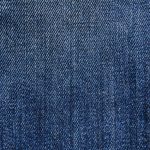Looking to give your linen fabric a fresh new look? In this article, we’ll show you how to wax your linen fabric to enhance its durability and give it a stylish, weather-resistant finish.
You’ll learn the steps to choose the right wax, prepare your fabric, and apply the wax for maximum effectiveness.
We’ll also provide tips for spreading and buffing the wax, as well as proper care to ensure your waxed linen fabric stays in top shape.
Let’s get started!
Table of Contents
Choosing the Right Wax
To get started, you’ll want to choose the right wax for your linen fabric. The waxing process is crucial in achieving the desired results, so it’s important to select the appropriate wax based on the type of linen fabric you have. Different types of linen fabrics require different waxes to ensure optimal performance and durability.
When it comes to choosing the right wax, consider the type of linen fabric you’re working with. There are various linen fabric types, such as plain weave linen, herringbone linen, and damask linen. Each type has its own unique properties and characteristics. For example, plain weave linen is lightweight, while herringbone linen has a distinctive pattern. Damask linen, on the other hand, is known for its luxurious and elegant appearance.
Once you’ve identified the type of linen fabric you have, you can then select the appropriate wax. Beeswax is a popular choice for waxing linen fabric due to its natural properties and ability to provide a protective coating. It is especially suitable for plain weave linen and herringbone linen. For damask linen, a blend of beeswax and paraffin wax can be used to enhance its luster and sheen.
Preparing the Linen Fabric
Start by ensuring that you have cleaned the linen fabric thoroughly before proceeding with the waxing process. Linen fabric is known for its natural properties that make it a popular choice for clothing, home decor, and other applications. It is durable, breathable, and has a beautiful drape. However, proper maintenance is essential to keep it looking its best.
To prepare the linen fabric for waxing, start by checking the care instructions provided by the manufacturer. If the fabric is machine washable, wash it on a gentle cycle with a mild detergent. Avoid using bleach or harsh chemicals that can damage the fabric. After washing, gently squeeze out any excess water and lay the fabric flat to dry. Avoid wringing or twisting the fabric, as this can cause it to lose its shape.
Once the fabric is dry, check for any stains or spots that may need to be treated before waxing. Use a stain remover or a mild soap to gently remove any stains, taking care not to scrub too hard and damage the fabric.
Applying the Wax
When it comes to applying wax to your linen fabric, there are a few techniques you should consider. The way you apply the wax can greatly affect the finished product, so it’s important to choose the right method for your desired outcome.
Additionally, selecting the right wax for your project is crucial in achieving the desired level of waterproofing and durability.
Wax Application Techniques
Apply the wax to the fabric using even, smooth strokes, ensuring that it is evenly distributed. To achieve the best results, it is important to use the right techniques when applying wax to linen fabric. Start by melting the wax using a suitable heat source, such as a double boiler or a wax melter. Once the wax has melted, dip a clean, lint-free cloth or sponge into the melted wax and begin applying it to the fabric. Work in small sections, applying the wax in a thin, even layer. Use gentle, circular motions to ensure that the wax is evenly distributed. Avoid applying too much wax, as this can lead to a stiff and heavy finish. Allow the wax to dry completely before proceeding with any additional steps.
| Wax Application Techniques | Tips |
|---|---|
| Use a clean, lint-free cloth or sponge for application | This will help prevent any lint or debris from getting trapped in the wax |
| Apply the wax in thin, even layers | This will ensure an even distribution and prevent a heavy, stiff finish |
| Allow the wax to dry completely before proceeding | This will prevent any smudging or smearing of the wax during subsequent steps |
Choosing the Right Wax
To ensure the best results, you should consider factors such as the type of surface and desired finish when choosing the right wax. Here are some things to keep in mind:
-
Different types of waxes for fabric:
-
Beeswax: This natural wax is known for its water-resistant properties and is great for outdoor fabrics.
-
Paraffin wax: This synthetic wax provides a smooth finish and is often used for dressier fabrics.
-
Benefits of using wax on linen fabric:
-
Water resistance: Waxing linen fabric creates a protective barrier that helps repel water and keep the fabric dry.
-
Durability: The wax coating adds strength to the fabric, making it more resistant to tears and abrasions.
Spreading and Buffing the Wax
Spread the wax evenly across the linen fabric, making sure to buff it in circular motions for a smooth and even application. Buffing is an essential step in the waxing process as it helps to distribute the wax evenly and create a polished finish. There are different buffing techniques you can use to achieve the desired results.
One popular technique is the circular buffing motion. This involves applying the wax in small circular motions, working your way across the fabric. This method ensures that the wax is spread evenly and helps to smooth out any uneven areas.
Another technique is the back-and-forth buffing motion. With this method, you apply the wax in straight lines, moving back and forth across the fabric. This technique is particularly effective for larger areas and can help to cover more ground quickly.
Lastly, you can also consider using alternative waxing methods, such as using a buffing brush or a buffing machine. These tools can help to achieve a more professional and efficient finish, especially for larger projects.
Incorporate these techniques into your waxing routine to achieve a smooth and polished look on your linen fabric. Remember to always follow the manufacturer’s instructions and test a small, inconspicuous area before applying the wax to the entire fabric.
| Buffing Technique | Description | Best for |
|---|---|---|
| Circular Motion | Applying the wax in small circular motions, working your way across the fabric. | Evenly distributing the wax and smoothing out uneven areas. |
| Back-and-Forth Motion | Applying the wax in straight lines, moving back and forth across the fabric. | Covering larger areas quickly and achieving a more uniform application. |
| Buffing Tools | Using a buffing brush or a buffing machine to achieve a more professional and efficient finish. | Larger projects and achieving a polished look. |
Caring for Waxed Linen Fabric
Now that you have successfully spread and buffed the wax onto your linen fabric, it’s important to know how to properly care for and store your newly waxed pieces.
Storing waxed linen fabric is relatively simple. First, ensure that it is completely dry before folding or rolling it up. This will prevent any moisture from getting trapped and potentially causing mildew or mold. It is also advisable to store your waxed linen fabric in a cool, dry place away from direct sunlight, as exposure to heat and UV rays can degrade the wax coating over time.
If, for any reason, you want to remove the wax from your linen fabric, there are a few methods you can try. One option is to place the fabric between two layers of absorbent paper or cloth and apply heat with an iron. The heat will cause the wax to melt and transfer onto the absorbent material. Alternatively, you can try freezing the fabric, which will harden the wax and make it easier to scrape off with a blunt knife or credit card. Be sure to test these methods on a small, inconspicuous area of the fabric first to ensure that they do not damage or discolor it.
Troubleshooting and Tips
If you’re experiencing any issues or have questions about caring for your waxed linen pieces, don’t hesitate to ask for help.
Waxing linen fabric can be a tricky process, but with the right techniques, you can achieve a smooth and beautiful finish. However, there are some common mistakes to avoid.
One of the most common mistakes in waxing linen fabric is applying too much wax. While you want to ensure that the fabric is fully coated, using excessive amounts of wax can lead to a stiff and sticky finish. It’s best to start with a thin layer of wax and gradually build up as needed.
Another mistake is not evenly distributing the wax. Make sure to spread the wax evenly across the fabric to avoid splotchy or uneven areas. Use a lint-free cloth or brush to apply the wax in long, even strokes.
To achieve a smooth waxed finish, it’s important to let the fabric dry completely between coats. Rushing the process can result in a patchy or streaky appearance. Allow each layer of wax to dry thoroughly before applying the next.
Conclusion
In conclusion, waxing linen fabric is a simple and effective way to enhance its durability and water resistance. By choosing the right wax and properly preparing and applying it, you can ensure that your linen fabric will be well-protected and last for a long time.
Remember to spread and buff the wax evenly for an even finish, and follow the care instructions to maintain its quality. With these tips and troubleshooting advice, you’ll be able to enjoy your waxed linen fabric for years to come.



